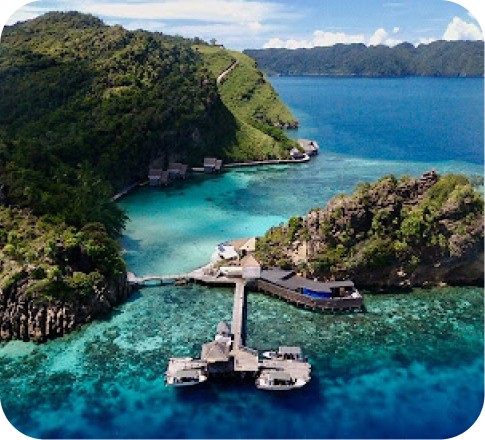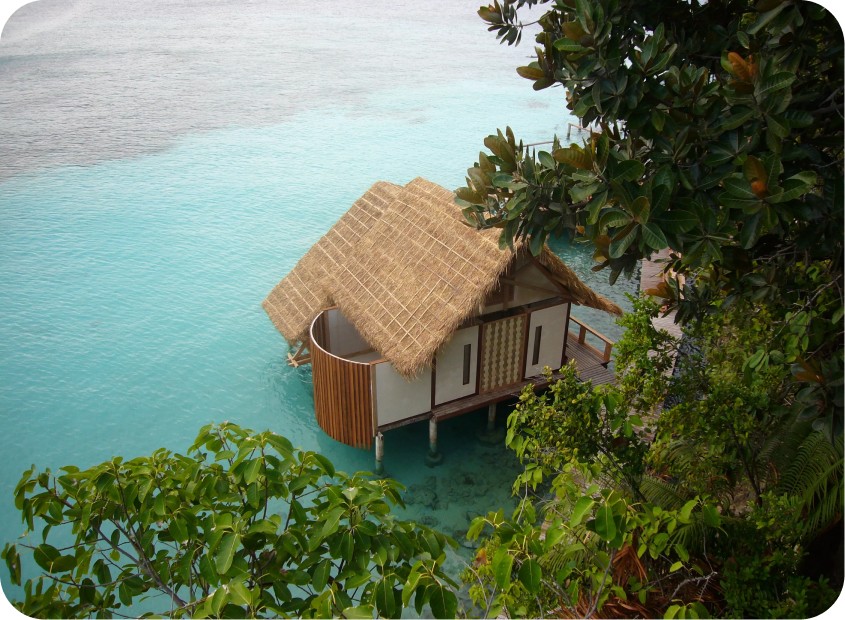






Travel to the indigenous people of Misool
Embrace the Spirit of Indigenous Cultures
Overview:
Overview:
Embark on a journey to Misool, a gem in Indonesia's Raja Ampat archipelago, where the vibrant cultures of indigenous communities await. Nestled amid crystal-clear waters and lush, emerald landscapes, Misool offers a unique opportunity to connect with its native people and their rich traditions. Discover their ancient ways of life, vibrant art, and time-honored rituals against the backdrop of stunning natural beauty.
Magey Itinerary
Day 1 Friday
Visit to the charity “Westpapua-Care” in Fafanlap, which we run, through which we teach English in the local school.
Boat trip from Fafanlap to Magey indigenous village.
Village tour, getting to know the indigenous Matbat community.
Local traditions: Sitting comfortably together in the village, the Matbats tell us more about their history and traditions. We dive deep into a strange world.
Dinner with indigenous dishes with local family.
Overnight stay in a simple homestay
Day 2 Saturday
Sago production: Sago is the most important plant for the Matbat. It is irreplaceable for building houses and as food. We experience first-hand how the sago flour is produced, using techniques that are thousands of years old. Sago has immense cultural significance throughout Papua. We find out more about it here.
House construction: The Matbat stilt houses are built entirely from natural materials. What materials exactly are used for this? How is a house like this built? The Matbat show us how. We are also welcome to help weave the canopy and learn bushcraft from the masters.
Damar, a tree resin, is another irreplaceable natural treasure for the Matbat. What is it used for? Where is it collected?
Today we have papeda, an indigenous dish made from sago, for dinner.
Overnight stay in a simple homestay
Day 3 Sunday
Excursion into the jungle near Magey, where the shaman gives us insight into the medicinal plants of the jungle and tells us more about the animistic customs of the Matbat.
Visit to a traditional garden. The Matbat Gardens are always close to the river and closely connected to the jungle. We learn more about the plants and how they are grown and can taste the delicious local fruits.
Vegetable seeds are rarely available in Magey. With our “Westpapua-care” project, we donate seeds with new vegetable varieties to the community to ensure food security for future generations.
Hunting fever: The Matbat still hunt regularly. In the dense jungle, the weapon of choice is not a bow and arrow, but a spear. A Matbat hunter explains to us how a hunt works and what kind of animals are captured. We also learn more about the art of trapping from natural materials.
Dinner with an indigenous family and indigenous dishes.
Overnight stay in a simple homestay
Day 4 Monday / Jungle trip
We take a boat up the river into the depths of the jungle, past mangrove forests, flocks of cockatoos and jungle views.
At the end of the river we set up our base camp for the night near a beautiful Matbat hamlet.
A 30-minute trek takes us to the “Malol” waterfall, which not only looks fantastically beautiful with its many pools and cascades, but also invites you to swim.
Fishing is just as important to the Matbat as hunting. Together we fish in the river for shrimp and fresh fish.
Traditional dinner with fish and river prawns grilled in a bamboo cane, complemented with jungle vegetables.
Overnight stay in the jungle camp
Day 5 Tuesday / Jungle trip
Today we set off in search of local wildlife during a 4 hour jungle trek. The diverse, often endemic world of butterflies and birds is particularly beautiful. The sighting of wallabies and crocodiles is another highlight of the day, but is not guaranteed because the animals are not always at the planned location.
Together with an indigenous “crocodile whisperer” we visit the crocodiles’ favorite place. Here we have a very good chance of seeing these shy animals because the Matbat have a special technique to attract crocodiles. The visit is completely safe for us. We keep enough distance. The crocodiles in Misool are also very shy of people and only attack people if they feel threatened.
Dinner with an indigenous family and indigenous dishes.
Overnight stay in a simple homestay
Day 6 Wednesday
The mangrove forests are important not only for the ecosystem but also for the Matbat. Here is the best place for fishing. There is a very special method for this: the roots of a certain tree have a psychoactive effect on the fish. They are placed under the mangrove roots. The drunk fish can then be collected by hand.
We look for mussels in the mangroves, which are a special delicacy.
Wildlife in the mangroves: The wildlife here is not easy to find. Of course, we still try our luck with a good chance of gaining further insights into the fascinating bird world of Misool.
Visit to the charity “Westpapua-Care” in Magey, which we run, through which we teach English in the local school. Contrasting insights between tradition and modernity
Once again, sitting together in the village, we have the opportunity to learn more about the Matbat and their language, and above all to ask the last questions about everything we really want to know about this barely documented tribe.
Dinner with an indigenous family and indigenous dishes.
Overnight stay in a simple homestay
Day 7 Thursday
Photoshoot in the style of Matbat. At the end it will be festive. We are given make-up by the Matbat and are allowed to wear traditional Matbat clothing made from natural materials. Together with the community we do an unforgettable photo shoot at a traditional house.
In the late afternoon the ship returns to Sorong. We accompany you to the harbor and to your ship cabins.
Day 1 Friday
Visit to the charity “Westpapua-Care” in Fafanlap, which we run, through which we teach English in the local school.
Boat trip from Fafanlap to Magey indigenous village.
Village tour, getting to know the indigenous Matbat community.
Local traditions: Sitting comfortably together in the village, the Matbats tell us more about their history and traditions. We dive deep into a strange world.
Dinner with indigenous dishes with local family.
Overnight stay in a simple homestay
Day 2 Saturday
Sago production: Sago is the most important plant for the Matbat. It is irreplaceable for building houses and as food. We experience first-hand how the sago flour is produced, using techniques that are thousands of years old. Sago has immense cultural significance throughout Papua. We find out more about it here.
House construction: The Matbat stilt houses are built entirely from natural materials. What materials exactly are used for this? How is a house like this built? The Matbat show us how. We are also welcome to help weave the canopy and learn bushcraft from the masters.
Damar, a tree resin, is another irreplaceable natural treasure for the Matbat. What is it used for? Where is it collected?
Today we have papeda, an indigenous dish made from sago, for dinner.
Overnight stay in a simple homestay
Day 3 Sunday
Excursion into the jungle near Magey, where the shaman gives us insight into the medicinal plants of the jungle and tells us more about the animistic customs of the Matbat.
Visit to a traditional garden. The Matbat Gardens are always close to the river and closely connected to the jungle. We learn more about the plants and how they are grown and can taste the delicious local fruits.
Vegetable seeds are rarely available in Magey. With our “Westpapua-care” project, we donate seeds with new vegetable varieties to the community to ensure food security for future generations.
Hunting fever: The Matbat still hunt regularly. In the dense jungle, the weapon of choice is not a bow and arrow, but a spear. A Matbat hunter explains to us how a hunt works and what kind of animals are captured. We also learn more about the art of trapping from natural materials.
Dinner with an indigenous family and indigenous dishes.
Overnight stay in a simple homestay
Day 4 Monday / Jungle trip
We take a boat up the river into the depths of the jungle, past mangrove forests, flocks of cockatoos and jungle views.
At the end of the river we set up our base camp for the night near a beautiful Matbat hamlet.
A 30-minute trek takes us to the “Malol” waterfall, which not only looks fantastically beautiful with its many pools and cascades, but also invites you to swim.
Fishing is just as important to the Matbat as hunting. Together we fish in the river for shrimp and fresh fish.
Traditional dinner with fish and river prawns grilled in a bamboo cane, complemented with jungle vegetables.
Overnight stay in the jungle camp
Day 5 Tuesday / Jungle trip
Today we set off in search of local wildlife during a 4 hour jungle trek. The diverse, often endemic world of butterflies and birds is particularly beautiful. The sighting of wallabies and crocodiles is another highlight of the day, but is not guaranteed because the animals are not always at the planned location.
Together with an indigenous “crocodile whisperer” we visit the crocodiles’ favorite place. Here we have a very good chance of seeing these shy animals because the Matbat have a special technique to attract crocodiles. The visit is completely safe for us. We keep enough distance. The crocodiles in Misool are also very shy of people and only attack people if they feel threatened.
Dinner with an indigenous family and indigenous dishes.
Overnight stay in a simple homestay
Day 6 Wednesday
The mangrove forests are important not only for the ecosystem but also for the Matbat. Here is the best place for fishing. There is a very special method for this: the roots of a certain tree have a psychoactive effect on the fish. They are placed under the mangrove roots. The drunk fish can then be collected by hand.
We look for mussels in the mangroves, which are a special delicacy.
Wildlife in the mangroves: The wildlife here is not easy to find. Of course, we still try our luck with a good chance of gaining further insights into the fascinating bird world of Misool.
Visit to the charity “Westpapua-Care” in Magey, which we run, through which we teach English in the local school. Contrasting insights between tradition and modernity
Once again, sitting together in the village, we have the opportunity to learn more about the Matbat and their language, and above all to ask the last questions about everything we really want to know about this barely documented tribe.
Dinner with an indigenous family and indigenous dishes.
Overnight stay in a simple homestay
Day 7 Thursday
Photoshoot in the style of Matbat. At the end it will be festive. We are given make-up by the Matbat and are allowed to wear traditional Matbat clothing made from natural materials. Together with the community we do an unforgettable photo shoot at a traditional house.
In the late afternoon the ship returns to Sorong. We accompany you to the harbor and to your ship cabins.
Day 1 Friday
Visit to the charity “Westpapua-Care” in Fafanlap, which we run, through which we teach English in the local school.
Boat trip from Fafanlap to Magey indigenous village.
Village tour, getting to know the indigenous Matbat community.
Local traditions: Sitting comfortably together in the village, the Matbats tell us more about their history and traditions. We dive deep into a strange world.
Dinner with indigenous dishes with local family.
Overnight stay in a simple homestay
Day 2 Saturday
Sago production: Sago is the most important plant for the Matbat. It is irreplaceable for building houses and as food. We experience first-hand how the sago flour is produced, using techniques that are thousands of years old. Sago has immense cultural significance throughout Papua. We find out more about it here.
House construction: The Matbat stilt houses are built entirely from natural materials. What materials exactly are used for this? How is a house like this built? The Matbat show us how. We are also welcome to help weave the canopy and learn bushcraft from the masters.
Damar, a tree resin, is another irreplaceable natural treasure for the Matbat. What is it used for? Where is it collected?
Today we have papeda, an indigenous dish made from sago, for dinner.
Overnight stay in a simple homestay
Day 3 Sunday
Excursion into the jungle near Magey, where the shaman gives us insight into the medicinal plants of the jungle and tells us more about the animistic customs of the Matbat.
Visit to a traditional garden. The Matbat Gardens are always close to the river and closely connected to the jungle. We learn more about the plants and how they are grown and can taste the delicious local fruits.
Vegetable seeds are rarely available in Magey. With our “Westpapua-care” project, we donate seeds with new vegetable varieties to the community to ensure food security for future generations.
Hunting fever: The Matbat still hunt regularly. In the dense jungle, the weapon of choice is not a bow and arrow, but a spear. A Matbat hunter explains to us how a hunt works and what kind of animals are captured. We also learn more about the art of trapping from natural materials.
Dinner with an indigenous family and indigenous dishes.
Overnight stay in a simple homestay
Day 4 Monday / Jungle trip
We take a boat up the river into the depths of the jungle, past mangrove forests, flocks of cockatoos and jungle views.
At the end of the river we set up our base camp for the night near a beautiful Matbat hamlet.
A 30-minute trek takes us to the “Malol” waterfall, which not only looks fantastically beautiful with its many pools and cascades, but also invites you to swim.
Fishing is just as important to the Matbat as hunting. Together we fish in the river for shrimp and fresh fish.
Traditional dinner with fish and river prawns grilled in a bamboo cane, complemented with jungle vegetables.
Overnight stay in the jungle camp
Day 5 Tuesday / Jungle trip
Today we set off in search of local wildlife during a 4 hour jungle trek. The diverse, often endemic world of butterflies and birds is particularly beautiful. The sighting of wallabies and crocodiles is another highlight of the day, but is not guaranteed because the animals are not always at the planned location.
Together with an indigenous “crocodile whisperer” we visit the crocodiles’ favorite place. Here we have a very good chance of seeing these shy animals because the Matbat have a special technique to attract crocodiles. The visit is completely safe for us. We keep enough distance. The crocodiles in Misool are also very shy of people and only attack people if they feel threatened.
Dinner with an indigenous family and indigenous dishes.
Overnight stay in a simple homestay
Day 6 Wednesday
The mangrove forests are important not only for the ecosystem but also for the Matbat. Here is the best place for fishing. There is a very special method for this: the roots of a certain tree have a psychoactive effect on the fish. They are placed under the mangrove roots. The drunk fish can then be collected by hand.
We look for mussels in the mangroves, which are a special delicacy.
Wildlife in the mangroves: The wildlife here is not easy to find. Of course, we still try our luck with a good chance of gaining further insights into the fascinating bird world of Misool.
Visit to the charity “Westpapua-Care” in Magey, which we run, through which we teach English in the local school. Contrasting insights between tradition and modernity
Once again, sitting together in the village, we have the opportunity to learn more about the Matbat and their language, and above all to ask the last questions about everything we really want to know about this barely documented tribe.
Dinner with an indigenous family and indigenous dishes.
Overnight stay in a simple homestay
Day 7 Thursday
Photoshoot in the style of Matbat. At the end it will be festive. We are given make-up by the Matbat and are allowed to wear traditional Matbat clothing made from natural materials. Together with the community we do an unforgettable photo shoot at a traditional house.
In the late afternoon the ship returns to Sorong. We accompany you to the harbor and to your ship cabins.
Find Us Here
explore
Contact us
book@papua-expedition.com
+62 822-6630-4975
Find Us Here
explore
Contact us
book@papua-expedition.com
+62 822-6630-4975
Find Us Here
explore
Contact us
book@papua-expedition.com
+62 822-6630-4975

